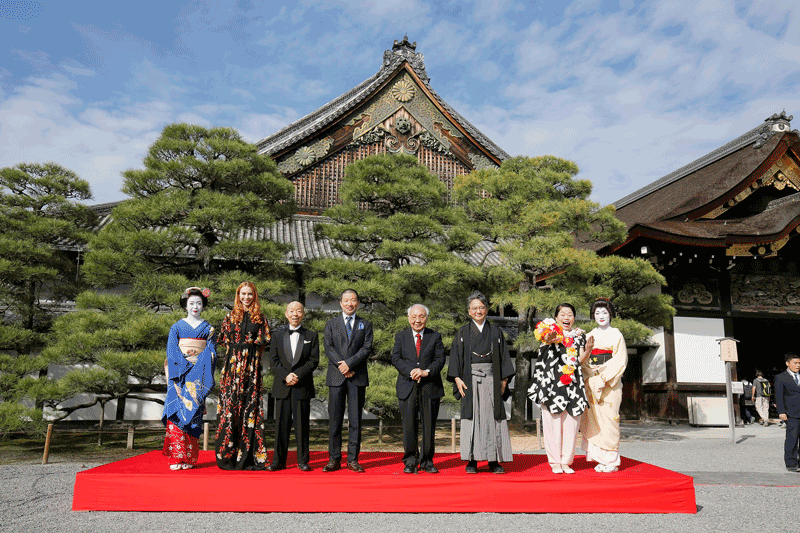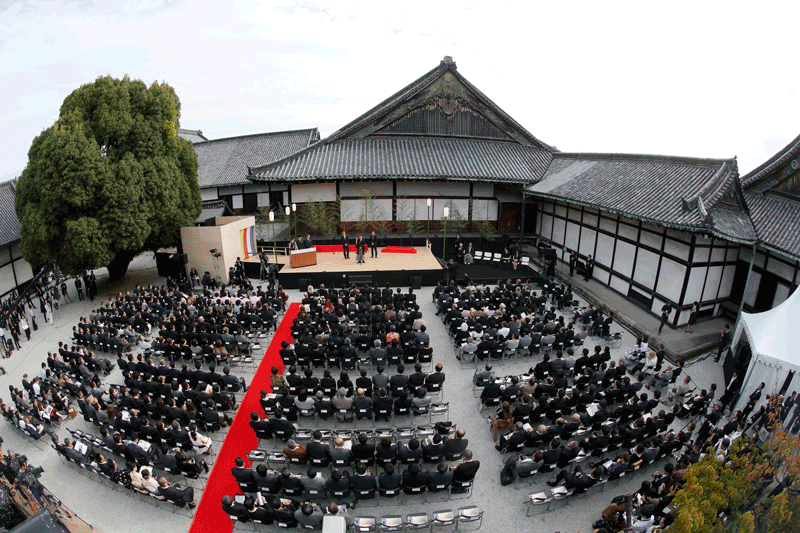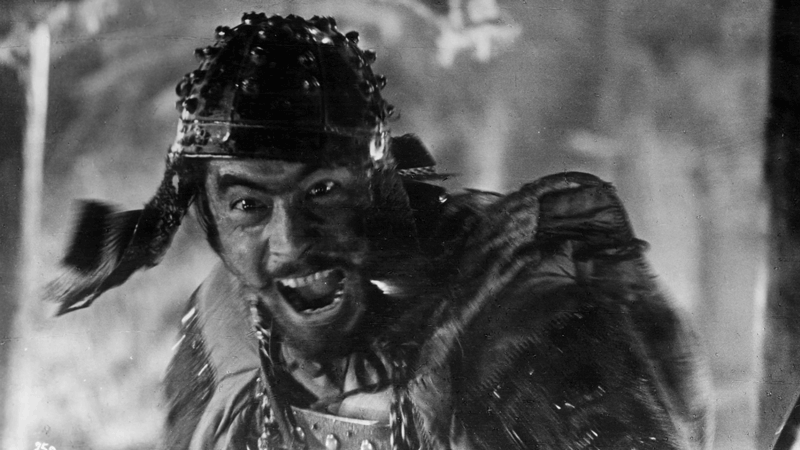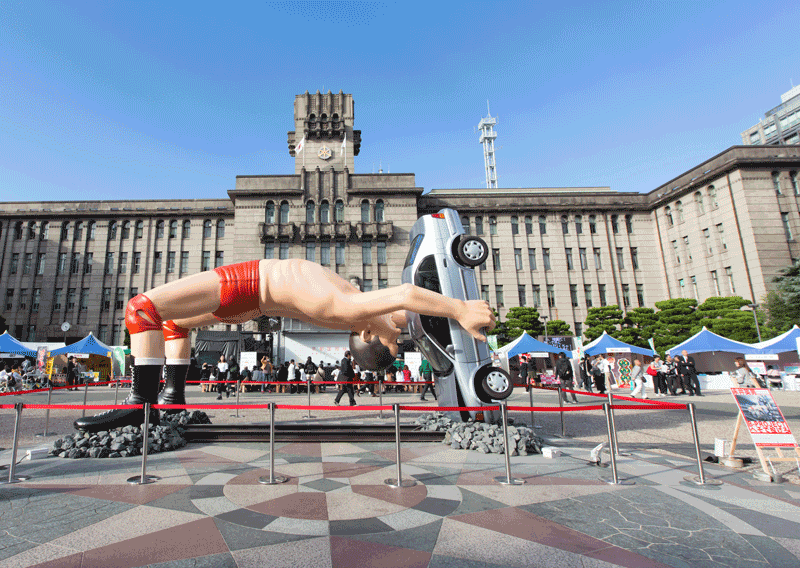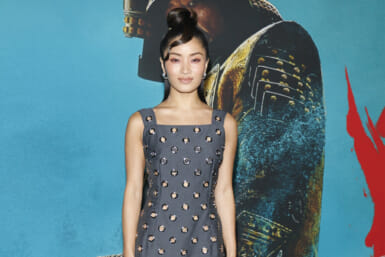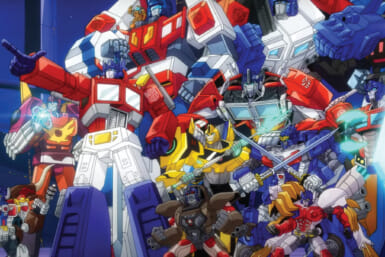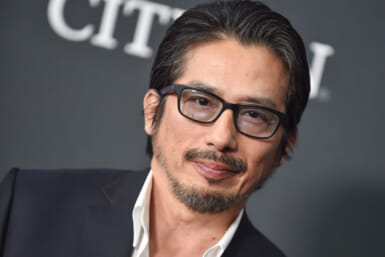A long weekend of film, fine dining, glamorous geisha and Zen meditation in Japan’s old capital.
The Kyoto International Film and Art Festival is about more than just movies and exhibitions. It’s a fascinating event that helps to promote one of most culturally diverse and rich cities in the world. During our short stay there we were whacked by a monk and had dinner with some geisha. Of course there was also time to take in a few films. Here are some of our highlights from the festivities.
Nijo Castle
Looking to make a big impression from the get-go, the festival kicked off in spectacular fashion at Nijo Castle. The 400 year old World Heritage Site has managed to retain its grandeur and beauty, making it one of one Kyoto’s most popular locations. It is definitely worth a visit if you are in the area, particularly for the idyllic gardens, elegantly decorated tatami rooms and the nightingale floorboards that squeak when stepped upon as a security measure against intruders. This time, adding to the allure of the place, there were a number of geisha at the site delighting guests with their performances on the shamisen. There were also many important figures from the movie industry in attendance including director Masahiro Shinoda, who came to prominence as part of the Japanese New Wave in the 1960s. He picked up the Shozo Makino award, a long-standing prize that honors the father of Japanese cinema, Shozo Makino.
Zen Meditation at Ryosoku-in Temple
Film Festivals can be quite hectic so it was nice to be able to take some time out and calm the mind with some Zen meditation at the tranquil location of Ryosoku-in, a sub-temple within Kenninji Temple in Gion. Firstly we were ushered to a small tatami room overlooking a pastoral green courtyard where the monk in charge gave a short introduction in Japanese. He emphasized the importance of good posture, breathing properly and of course shutting everything out. For beginners it can be more difficult than it sounds. The seating position is quite tough on the legs and it is easy to get distracted. The longer it goes on, however, the more you get you used to it and by the end everyone in the group seemed relaxed and refreshed even though some of us had been hit by the monk’s wooden stick (keisaku) due to lapses of concentration. Despite the pain it was definitely a worthwhile experience.
Dining with Geisha and Maiko
A first class dining establishment specializing in kaiseki cuisine, Machiya Hachi provides guests with a series of sumptuous dishes that taste as good as they look and that is saying something as they all looked look like pieces of art. From the first dish that included prawns, small potatoes, beef rolls, salmon roe and sea bream bar sushi to the pear and kiwi dessert, this was a delectable meal that was presented exquisitely. The fact that we were accompanied by geisha and maiko made the evening even more special. They poured our champagne and wine while also giving us an intriguing insight into their daily lives. It was a rare opportunity to sit down and talk with a group of female entertainers who are shrouded in myth, mystery and misconception.
Documentaries
Of course the main purpose of attending a film festival is to watch some movies. This year in Kyoto it was the documentary film section that really stood out. Top billing was given to “Mifune: The Last Samurai” by the Academy Award winning director Steven Okazaki. Narrated by Keanu Reeves, it tells the story of the man widely viewed as the finest Japanese actor of the 20th century, Toshiro Mifune. Featuring interviews with a number of big-hitters from this country as well as prominent Hollywood figures like Steven Spielberg and Martin Scorsese, the film unsurprisingly spends a long time focusing on Mifune’s relationship with Akira Kurosawa. It’s also interesting to learn about his upbringing in Manchuria and his time in the aerial photography unit during World War II. Other documentary highlights at the festival were all directed by Tatsuya Mori. “A” and “A2” both delve into the radical world of the terrorist cult organization, Aum Shinrikyo, while “Fake” takes a closer look into the life of the once heralded deaf composer Mamoru Samuragochi, who turned out to be neither completely deaf nor the main author of his own work. All three are deep, thought-provoking documentaries by a man not afraid to take on controversial issues.
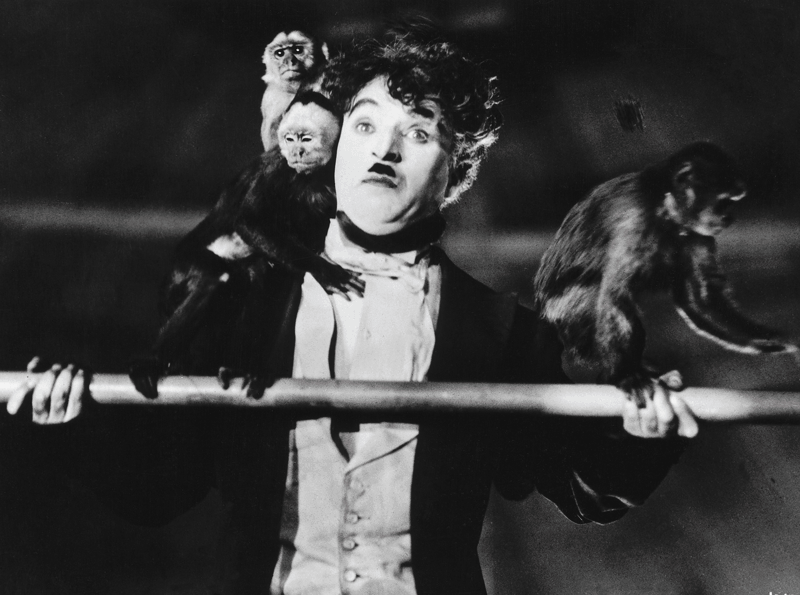
“The Circus” America, 1928, 73 minutes © Chaplin Films Copyright Roy Export S.A.S. All Rights Reserved.
Silent Films
Regarded as one of the world’s most influential directors, Yasujiro Ozu started out in the era of silent films making short comedies before focusing on more serious subject matters. His hard-core fans probably thought they’d seen his entire collection, but then a couple of months ago a short about a cheeky young child terrorizing his kidnapper called “A Straightforward Boy” was discovered at a toy factory in Kyoto. It premiered at the Festival with a modern-day benshi (a Japanese entertainer who provides live narration) and a pianist who performed over the film. It was then followed by his 1931 silent feature “The Lady and the Beard”. There were also a number of classic Charlie Chaplin silent films being shown at the festival, however, the pick of his movies was arguably his first true ‘talkie’, “The Great Dictator”. The political comedy satire condemns Adolf Hitler and Benito Mussolini, though, the British born comic did admit that he wouldn’t have made it had he known the true horrors of the holocaust.
Art Projects
For art lovers there was a wide range of exhibitions to keep them entertained. The one stand-alone piece that seemed to garner the most attention was by Hideo Nagai. It was a huge statue depicting the wrestler Giant Baba suplexing an actual car and was placed in front of the City Hall, prompting many passers-by to stop and take photographs. The former Rissei Elementary School was another popular destination. It featured a variety of rooms displaying works by all kinds of artists including manga specialist Yoshikazu Ebisu and the illustrator Hisao Ohmae. For fans of Japanese comedy Aeon Mall was the place to be. It was the venue of “Naomi’s Party”; a special exhibition by famed actress-comedian Naomi Watanabe. Letting you step into the playful world of the entertainer best known for her Beyonce impression, it featured past custom-made costumes and personal apparel from her fashion brand PUNYUS (which means “chubby” in Japanese).

